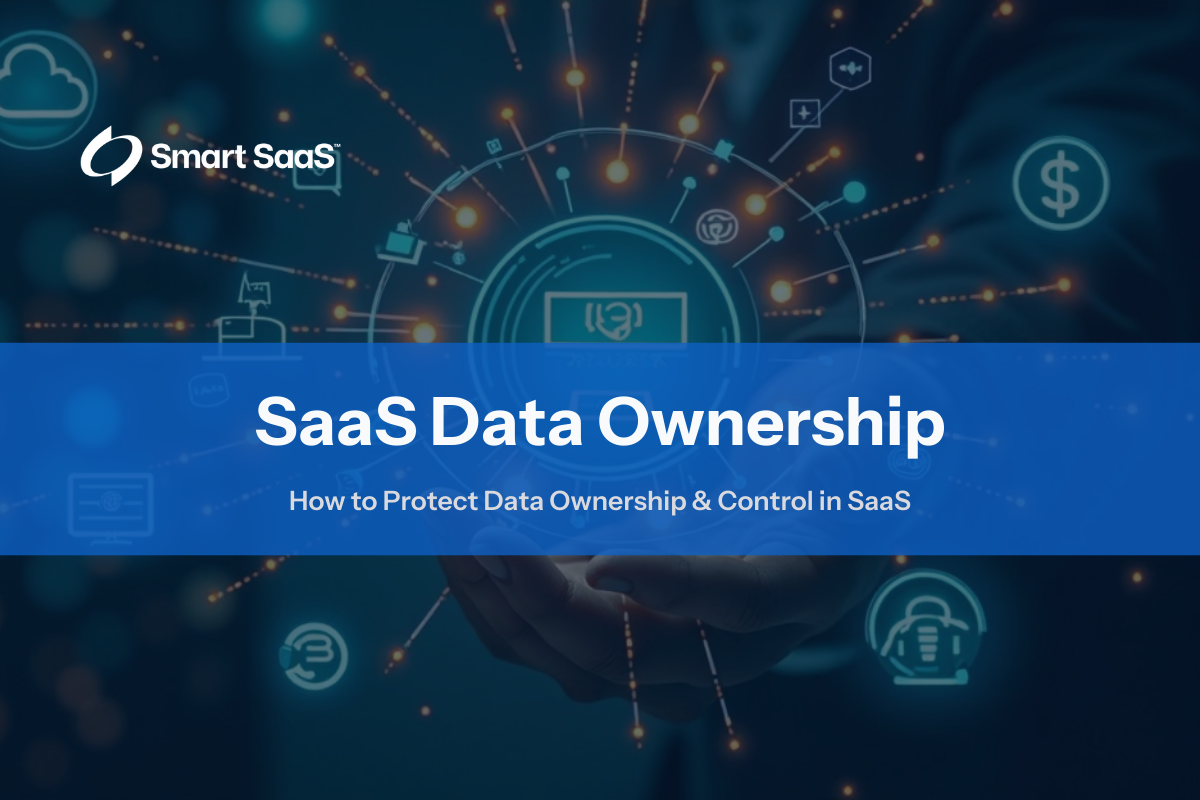

Monday, April 21, 2025
Kim Jamerson
In today’s digital‑first business environment, data is the lifeblood of business operations. However, several key questions arise when you use software‑as‑a‑service (SaaS) platforms. Who really owns your data? And who controls it?
The answers to these questions have legal, ethical, and operational consequences, so it’s essential for businesses to make SaaS data ownership a key consideration in every software decision.
This post breaks down what SaaS data ownership means, why it matters, and how you can protect your organization.

Data ownership is the legal right to control a set of data, including how the data is accessed, modified, shared, stored, and deleted. Two primary forms of data ownership are:
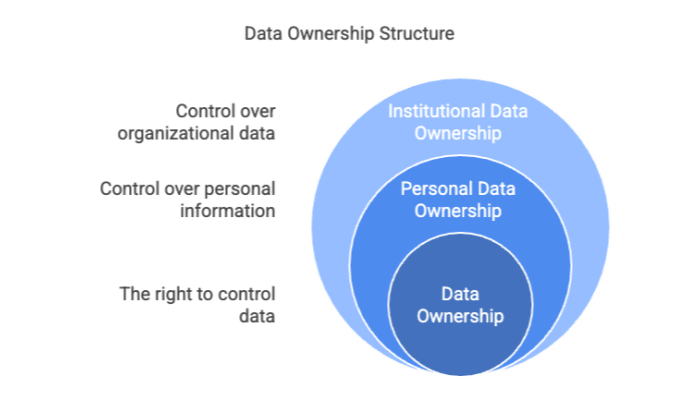

There’s a complex web of laws and regulations governing individual rights for personal data ownership, such as the General Data Protection Regulation (GDPR) in the EU, the California Consumer Protection Act (CCPA), the Health Insurance Portability and Accountability Act (HIPAA), which governs how medical data is stored and accessed, and the Gramm‑Leach‑Bliley Act (GLBA), which protects financial information.
Businesses must understand which legal requirements apply to the type of data they capture and that they have policies in place to ensure compliance.
Additionally, believe it or not, copyright laws can come into play. While raw data typically is not protected, databases and data compilations may be copyrighted if they meet “originality” requirements.
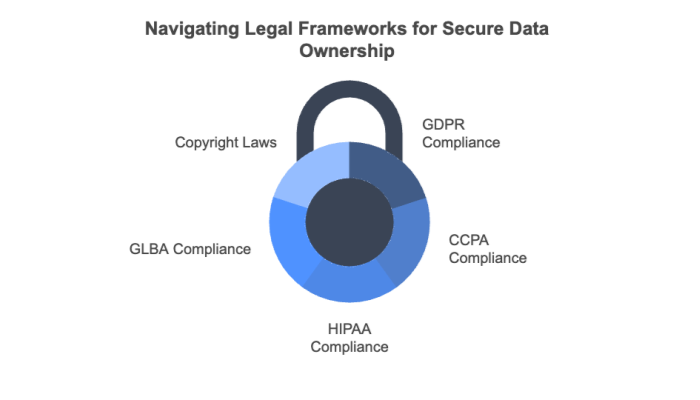

Data ownership is increasingly seen as a core issue in data ethics. Hot topics include:
A recent publication from the World Economic Forum, Digital Trust: Supporting Individual Agency, highlights the increased need for transparency about if, how, and when data is used—“86% of consumers care about data privacy, signaling a significant shift in consumer sentiment and a burgeoning demand for enhanced protection and control over personal data.”
The whitepaper highlights the potential benefits and harms of collecting user data to underscore the importance of giving users and customers “individual agency” (a.k.a. ownership) over their data.
|
|
Potential Benefits | Potential Harms |
|---|---|---|
| For Users |
|
|
| For Providers |
|
|

Institutional data ownership is a fundamental issue when your business uses SaaS solutions. Due to the cloud‑based delivery model, you’re giving SaaS providers access to your company’s data, and if the solution is built in a multi‑tenant environment, your data could potentially be exposed to other users if the vendor doesn’t have the proper safeguards in place.
Check out SaaS Security Unmasked for more information.
Beyond these security risks, clarifying SaaS data ownership is essential to avoiding vendor lock‑in, maintaining compliance with data protection regulations, and retaining the ability to migrate, delete, and fully control your data as needed.
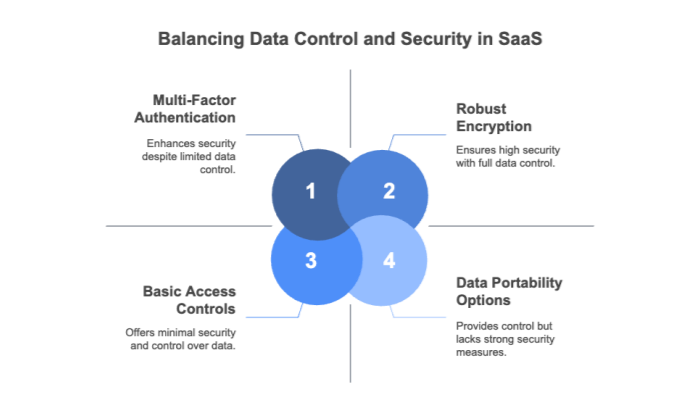

In any workplace collaboration, data ownership is typically determined by terms outlined in legal documents. Start by thoroughly reviewing all of the SaaS provider’s legal documents, including service level agreements (SLAs), privacy policies, terms of service (TOS), and master service agreements (MSAs). Some SaaS vendors explicitly state that customers retain ownership of their data, while others claim ambiguous rights to use, analyze, or even commercialize that data.
Two important areas to clarify include understanding SaaS vendors’ approach to data portability and their data retention and deletion policies.
Data portability refers to the ability to move your data from one provider to another. Unfortunately, many SaaS platforms make this difficult by:
Protect your business by looking for providers that offer data in standard formats (e.g., CSV, JSON), provide APIs for easier migration, and clearly address data portability in their user agreements.
Also, ask providers for a walkthrough of the data export process before you sign the contract so you don’t find yourself trapped if you want to switch later.
Institutional data ownership also involves knowing how long your data is kept and what happens when you end the relationship. You want to ensure your SaaS provider doesn’t inadvertently erase the data you need to operate your business.
For example, some vendors automatically mark “inactive” records for deletion to minimize database size. Conversely, you also want the ability to permanently delete data your data as needed to comply with regulations like GDPR or if you terminate your relationship with the vendor.
Key questions you should ask include:
Check out Data Privacy in the SaaS Era: Who Has Access to Your Information? for more information.
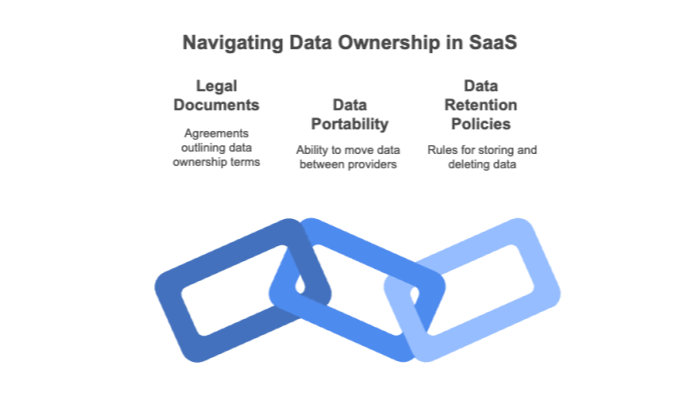

A data ownership protocol is a set of rules or standards that governs:
Data ownership protocols can be formal (such as a legal contract) or technical (such as a software framework).
Most SaaS tools' data ownership protocols aren’t technical specs. Instead, they’re outlined in various legal documents, like SLAs, TOSs, or data processing agreements (DPAs).
These documents might say something like: “Customer retains all ownership rights to their data.” But not all vendors are that clear and may reserve rights to use your data for analytics, AI training, or other purposes unless you explicitly opt out.
For example, design software Figma sets its Starter and Professional accounts as opted‑in by default for AI model training, while accounts licensed through an Organization or Enterprise plan are automatically opted out.
Several initiatives are underway to establish technical standards and frameworks to give users more control, limit access, and improve transparency.
While still in relatively early stages and focused more on personal data ownership, these efforts will likely influence B2B SaaS industry standards to support institutional data ownership as well.
Your business data is critical for operations and is often a competitive differentiator, so treat it with the same care you’d use for any other proprietary intellectual property.


SaaS has made business applications more accessible than ever. But it’s also introduced new risks associated with who owns, controls, and can use your data.
Lacking clear data ownership protocols:
As you choose SaaS providers, make sure you have clarity and confidence that your most valuable digital assets remain yours, no matter what.
